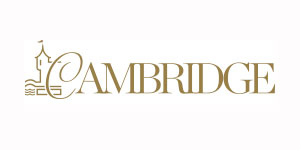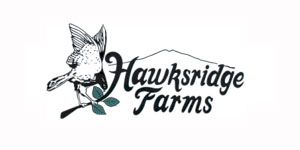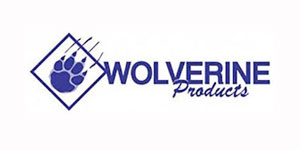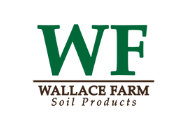Seasonal Lawn Treatments - ElkinLGPM Trusted Expertise and Superior Results
Are you green with envy… of your neighbor’s lawn? Rest assured, it didn’t get that way overnight. Having a beautiful, lush and a weed free lawn takes time.
Beautiful lawns share several of the same characteristics. They are mowed correctly and fertilizer and weed control have been applied at the appropriate times. A picture-perfect lawn also receives the right amount of moisture and is aerated annually to relieve soil compaction and give it a breath of fresh air.
Since all lawns eventually tire out, your neighbor’s envy-worthy lawn has likely been overseeded a few times – that is, has grass seed applied – and even had an unsightly bare spot or two thanks to visits from hungry rodents and other pests but those spots have long been patched.
Don’t fret if your neighbor won’t share secrets with you. Lawn care experts like ElkinLGPM will gladly share their expertise and experience. They’ve been trained to identify and eradicate insects and diseases, install and test your soil to determine what nutrients may be lacking.
They know when to mow and how much of the grass blade should be removed at one time, and they understand weed control. The best way to control weeds is to have a healthy, lush lawn, but getting there may require assistance from the application of pre- and post-emergent controls.
Healthy lawns often need some “little extras” to give them a boost. Aeration not only relieves compaction, but it opens up the soils’ pores so moisture and air easily reaches plant roots. Overseeding directly after aeration protects seeds and gives them a better opportunity to germinate.
If your neighbor has a mature lawn, there have likely been some other and possibly more dramatic moves to keep it beautiful. Landscapes evolve, meaning trees and shrubs grow. Lawn grass may now be competing with tall trees and sprawling shrubs for nutrients, water, and even sunshine. This may require overseeding areas with a shade-tolerant grass, and applying more fertilizer.
The key to a beautiful is keeping it in balance with nature. This requires:
-
Mowing at the right time and right height with sharp blades.
-
Applying a fertilizer that supplies nutrients your lawn may be lacking.
-
Keeping weeds, insects, and diseases in check.
-
Aerating to allow air and moisture to penetrate the soil.
-
Overseeding to give tired lawns a boost and fill in bare areas.
-
Making sure your lawn evolves with your landscape.
If you’re dreaming about a beautiful lawn, but can’t seem to make it a reality, it may be time to bring in a pro, Elkin Lawn and Garden has been known to turn dreams into reality on a daily basis.
TURF PRO TREATMENT PLAN (RECOMMENDED):
Treatment I (January)
This is the time to sign up for the Lawn Treatment Program.
We will apply a fast-acting lime to the lawn to neutralize acid and toxic elements, improve soil structure, promote healthy bacteria, and enhance the availability of nutrients. While we are at your home, a soil test may be recommended (additional cost) during this treatment by your lawn technician.
Treatment II (February)
This application will provide your lawn with an excellent nitrogen source plus micronutrients. A Pre-emergent control for broadleaf weeds and crabgrass is included.
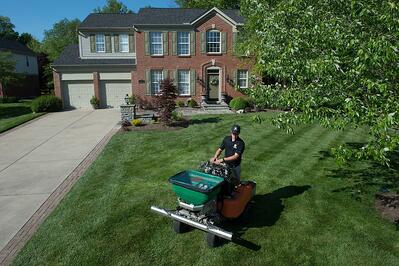
Treatment III (March)
This application will supplement treatment 2 by creating an additional source of nitrogen and pre-emergent control of unwanted weeds. Post-emergent weed control will be applied as needed.
Treatment IV (May)
This granular application gives your lawn a summertime boost of fertilizer while also providing control against the unwanted fall pests including Grub and Armyworms. Spot spray application of post-emergent weed control will be applied as needed.
Treatment V (June)
This application will supplement your lawn with biological nutrients along with the needed Iron to support a healthy deep green lawn.
Treatment VI (July/August)
This spray application includes a highly selective post-emergent herbicide used to combat difficult grass and broadleaf weeds within the lawn such as crabgrass, yellow nutsedge, and clover. This application provides quick results and only has a 1 week reseeding interval making this a must before the Fall Aeration and overseeding program.
Treatment VII (Sept. / Oct.)
This Application consists of a slow release starter fertilizer to coincide with a fall aeration and overseeding program.
Treatment VIII (Nov. / Dec.)
This is a winterizing application. This application provides a much-needed nitrogen source for the lawn. The cold weather months are the time of the year when food sources are stored in the root system of the turf in preparation for the spring growth explosion.
TURF BASIC TREATMENT PLAN:
Treatment I (January)
This is the time to sign up for the Lawn Treatment Program.
We will apply a fast-acting lime to the lawn to neutralize acid and toxic elements, improve soil structure, promote healthy bacteria, and enhance the availability of nutrients. While we are at your home, a soil test may be recommended (additional cost) during this treatment by your lawn technician.
Treatment II(February)
This application will provide your lawn with an excellent nitrogen source plus micro nutrients. Pre-emergence controls of broadleaf weeds and crabgrass is included.
Treatment III(March)
This application will supplement treatment 2 by creating an additional source of nitrogen and pre-emergence control of unwanted weeds. Post-emergent weed control will be applied as needed.
Treatment IV (July / August)
This spray application includes a highly selective post-emergent herbicide used to combat difficult grass and broadleaf weeds within the lawn such as crabgrass, yellow nutsedge, and clover. This application provides quick results and only has 1 week ressding interval making this a must before the Fall Aeration and Overseeding.
Treatment V (Sept. / Oct.)
This Application consists of a slow release starter fertilizer to coincide with a fall aeration and overseeding program.
ADDIONAL SERVICE PLANS:
*FALL CORE AERATION AND OVERSEEDING (SEPT. – OCT.)
Aeration is one of the most important procedures for maintaining a beautiful and healthy lawn. Typical North Carolina soil is made up primarily of hard compacted clay creating the need for soil in our area to be aerated at least once per year. Compacted soils reduce drainage, increase runoff, and inhibit root growth. Soil compaction promotes weed growth as well.
Aeration prevents nutrients, water, and air to penetrate the soil and access the root zone helping the roots to dig deeper into the soil. Deep digging roots tolerate stress and drought better than shallow roots. Aeration also prepares the lawn to be over seeded. This service also includes overseeding at a rate of 3-5 lbs per 1,000 square ft. using only premium blue tag certified tall fescue seed which is certified to have 100% no weed seed or other crop matter and supports a 90% germination rate.
*Fungicide Applications (May – Aug.)
Brown patch is most severe during extended periods of hot, humid weather. The disease can begin to develop when night temperatures exceed 60 deg. F, but is most severe when low and high temperatures are above 70 deg. F and 90 deg. F, respectively. The turfgrass leaves must be continuously wet for at least 10 to 12 hours for the brown patch fungus to infect. Poor soil drainage, lack of air movement, shade, cloudy weather, dew, over-watering, and watering in late afternoon favor prolonged leaf wetness and increased disease severity. With this service we will keep your lawn healthy through fungicide applications to fight brown patch and other similar fungus. This treatment process includes fungicide applications every 28 days beginning in the month of May for a total of 4 applications for the year.


